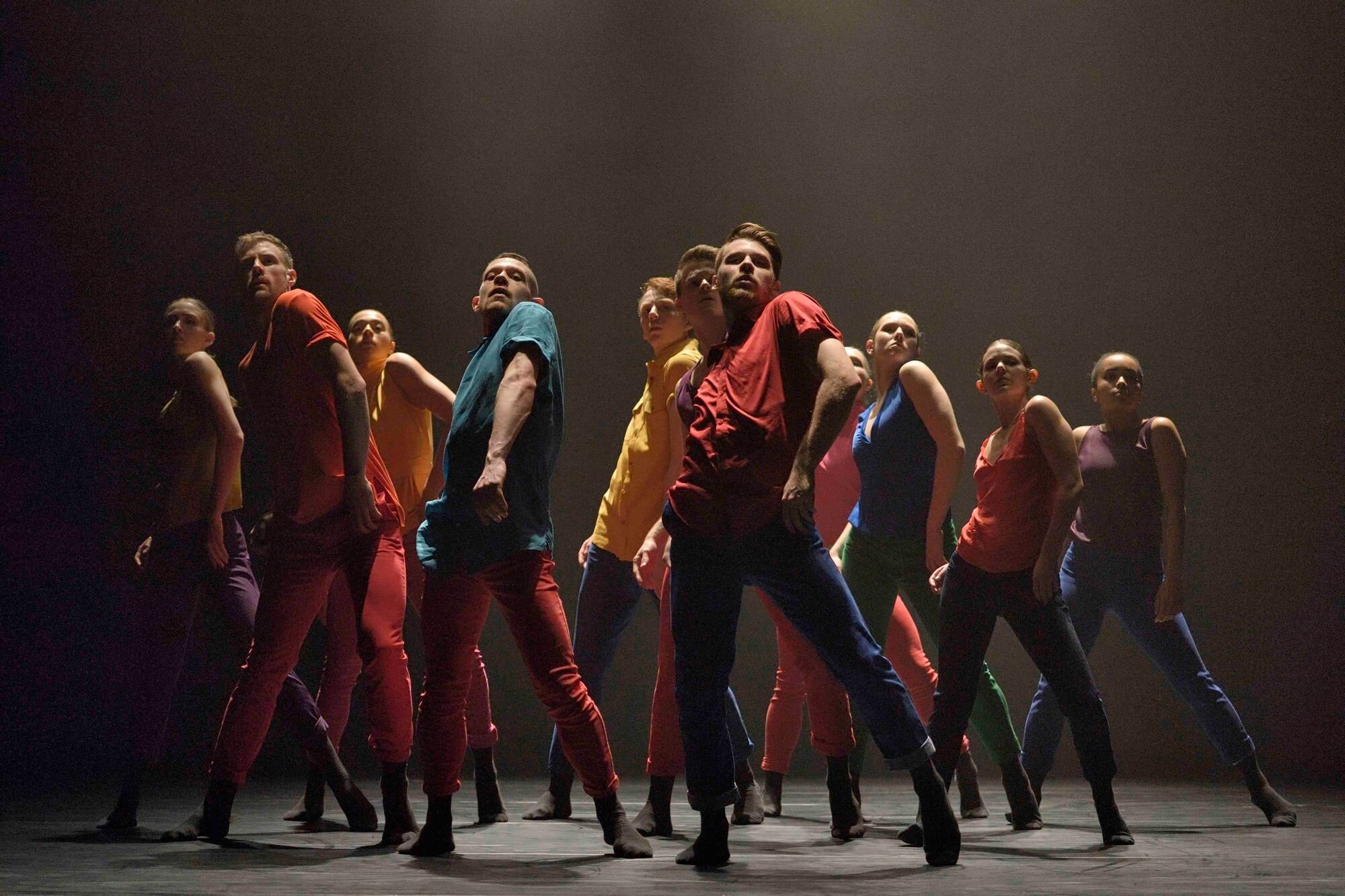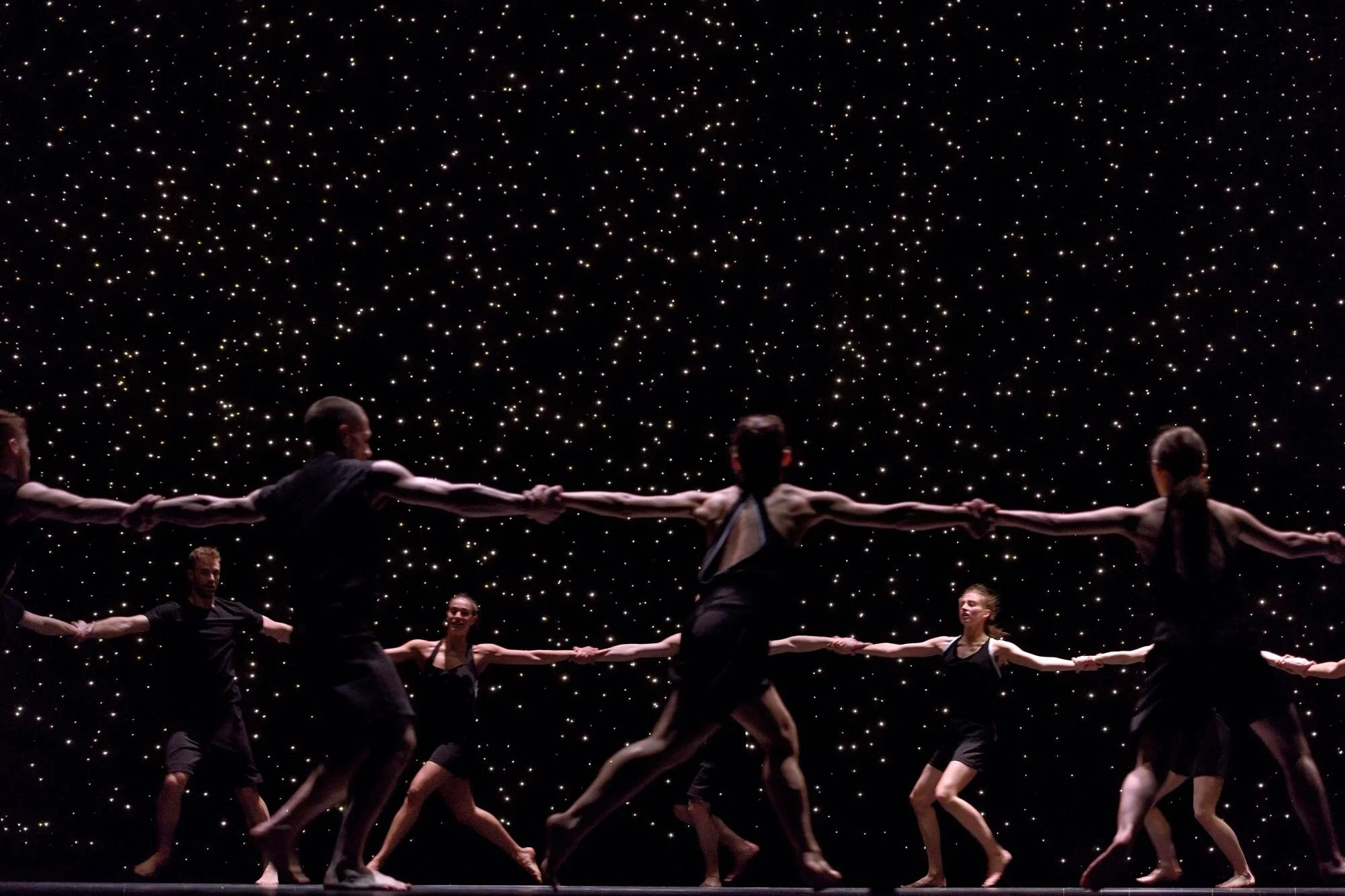
Ballet BC - MODERN DANCE, UNBOXED AND UNBOUND
by Victoria Thomas
Cultural scholars of the 20th century wondered and worried about the fate of ballet: could classical dance survive in a screen-obsessed world of atomic entertainment?
Ballet BC, a creation-based contemporary ballet company in Vancouver, B.C., now under the directorship of globally celebrated choreographer Medhi Walerski, leaves no doubt that the answer is “yes.”
Cave-paintings in France and Spain dating from 30,000 to 10,000 B.C.E. portray people dancing. Were they dancing to please the gods, to ask for rain, to bless the harvest or a successful hunt, to end a plague, or just for the sheer exhilaration of movement? Modern dance provokes the same questions.
Not coincidentally, Walerski’s work called “Petite Ceremonie” has been a staple of the Ballet BC repertoire for several years. Incorporating sound and spoken word, this haunting composition began when Walerski asked the dancers to tell him what “life in a box” meant. This work may be explored as a metaphor for the state of modern dance itself, reverberating with ritual, and often put into a box.
Ballet is now in its seventh century, first blooming in the court–life of the European Renaissance. Ballet BC, founded in 1986 by David Y.H.Lui, Jean Orr and Sheila Begg, invites us into a second renaissance, where dance is no longer a codified script, but an essential language of invention and energy. The company presents new work by the world’s most sought-after Canadian and international contemporary choreographers, bringing contemporary dance to audiences on regional, national and international tours in addition to the regular performance season in Vancouver.
The classical rigor of those seven centuries—“Plie! Releve! Sauté!”—persists, yet today’s dancers look different than those we may remember from our first childhood viewing of “Swan Lake.” First, and most obviously, the long-Eurocentric demography has changed: ballet is now melanin-rich, and pains are taken to excise the entrenched racism that cast roles of color as “exotic” odalisques and Blackamoors (one squirms to remember the blackface of “Petrushka”). Second, before the iconoclastic Nureyev, male dancers usually served primarily in supporting roles to swans and princesses, clearly not the case today.
And the literal body of dance itself has changed, thanks to safe-dance ethos and dance medicine. Dancers train differently and dance differently than they did in the 19th century, in ways that are less harmful and more dynamic to the artistic athletes.
Most importantly, the dancer assumes a level of creative responsibility that goes beyond mastering technique and craft. This shift is significant in the contemporary work of Ballet BC, where dancers co-create with choreographers. The result may be jazzy, improvised, and humorous, qualities we never expected from “La Bayadere.”
BC Ballet informs us once and for all that dance is not a museum. Seeing this company affirms that dance creates joy, and that human beings continue to love the public ceremony of performance.




